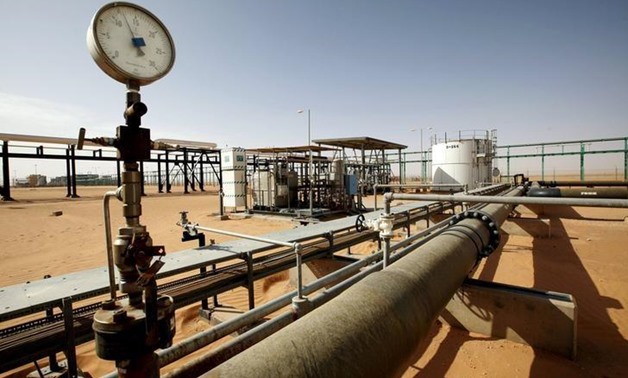
FILE PHOTO: Pump jacks operate at sunset in an oilfield in Midland, Texas U.S. August 22, 2018. REUTERS/Nick Oxford/File Photo
LONDON - 22 October 2018: Oil edged above $80 a barrel on Monday, lifted by nervousness over a worsening diplomatic crisis between Saudi Arabia and the West, just two weeks before U.S. sanctions potentially choke off Iranian crude supplies.
Saudi energy minister Khalid al-Falih told Russia’s TASS news agency that his country had no intention of unleashing a 1973-style oil embargo on Western consumers, but rather was focused on raising output to compensate for supply losses elsewhere, such as Iran.
Several U.S. lawmakers have suggested imposing sanctions on Saudi Arabia over the killing of Saudi journalist Jamal Khashoggi, while the kingdom, the world’s largest oil exporter, pledged to retaliate to any sanctions with “bigger measures”.
Falih said Saudi Arabia would soon raise output to 11 million barrels per day (bpd) from the current 10.7 million. He added that Riyadh had capacity to increase output to 12 million bpd and Gulf OPEC ally, the United Arab Emirates, could add a further 200,000 bpd.
Benchmark Brent crude oil futures LCOc1 rose 45 cents on the day to $80.23 a barrel by 0900 GMT, while U.S. crude futures CLc1 rose 31 cents to $69.43 a barrel.
“Politics are coming into the picture and maybe this is what (the Saudis) will do, but as far as next year’s supply/demand balance is concerned, it’s not justified for them to increase production,” PVM Oil Associates strategist Tamas Varga said.
U.S. sanctions on Iran’s oil sector start on Nov. 4 and analysts believe anything up to 1.5 million bpd in supply could be at risk.
“The big unknown is how much Iranian oil will be off the market and we’ll know in about a month’s time. Then we’ll have a clearer picture of what to expect for the first quarter of next year,” Varga said.
OPEC agreed in June to boost supply to make up for the expected disruption to Iranian exports.
However, an internal document reviewed by Reuters suggested OPEC is struggling to add barrels as an increase in Saudi supply was offset by declines elsewhere.
While Saudi Arabia is intent on making up for lost barrels, the outlook for demand next year is deteriorating.
The ongoing trade dispute between China and the United States will almost certainly erode demand, analysts say.
OPEC itself estimates demand for its crude will fall to an average of 31.8 million bpd next year, from an average 32.8 million bpd this year. [OPEC/O]
“The full impact of the U.S.-China trade war will hit markets in 2019 and could act as a considerable drag on oil demand next year, raising the possibility of the market returning to surplus,” said Emirates NBD bank in a note.

Comments
Leave a Comment